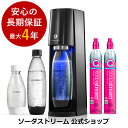2024-12-24 ミシガン大学

Behind the bulb, a screen displays the temperature of the glowing filament. The wavelengths of light emitted by the filament depend on its temperature, and how well the filament twirls the light depends on how close the wavelengths are to the pitch of the filament’s twists. Image credit: Brenda Ahearn/Michigan Engineering
<関連情報>
- https://news.umich.edu/twisted-edison-bright-elliptically-polarized-incandescent-light/
- https://www.science.org/doi/10.1126/science.adq4068
ねじれたナノカーボンフィラメントからの明るい円偏光黒体放射 Bright, circularly polarized black-body radiation from twisted nanocarbon filaments
Jun Lu, Hong Ju Jung, Ji-Young Kim, and Nicholas A. Kotov
Science Published:19 Dec 2024
DOI:https://doi.org/10.1126/science.adq4068
Editor’s summary
Upon heating, carbon nanotube yarns or tungsten wires mechanically twisted to have submicrometer-scale chirality can generate circularly polarized light ranging from the visible to midinfrared wavelengths. Lu et al. found that unlike other chiral emitters, these blackbody emitters have no vibronic state limitations and can achieve high brightness (see the Perspective by Bharadwaj and Jacob). The spectral characteristics were modeled with a mechanism that reconciled Planck’s law and the fluctuation-dissipation theorem. Ceramic composites allowed the electrically heated emitters to achieve long lifetimes. —Phil Szuromi
Abstract
Planck’s law ignores but does not prohibit black-body radiation (BBR) from being circularly polarized. BBR from nanostructured filaments with twisted geometry from nanocarbon or metal has strong ellipticity from 500 to 3000 nanometers. The submicrometer-scale chirality of these filaments satisfies the dimensionality requirements imposed by fluctuation-dissipation theorem and requires symmetry breaking in absorptivity and emissivity according to Kirchhoff’s law. The resulting BBR shows emission anisotropy and brightness exceeding those of conventional chiral photon emitters by factors of 10 to 100. The helical structure of these filaments enables precise spectral tuning of the chiral emission, which can be modeled using electromagnetic principles and chirality metrics. Encapsulating nanocarbon filaments in refractive ceramics produces highly efficient, adjustable, and durable chiral emitters capable of functioning at extreme temperatures previously considered unattainable.



